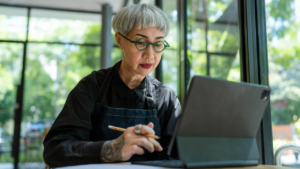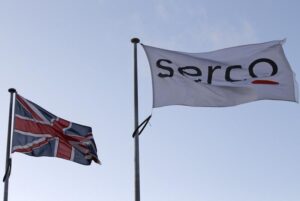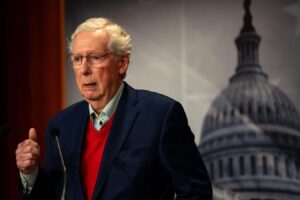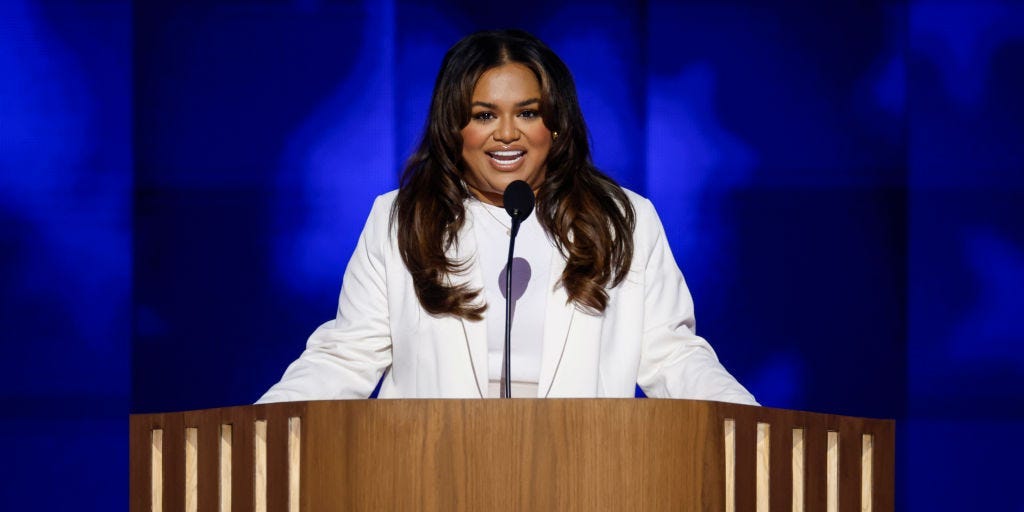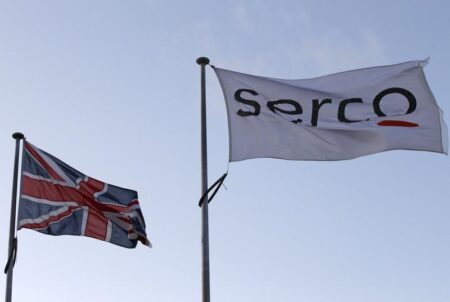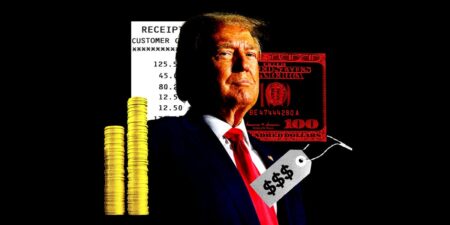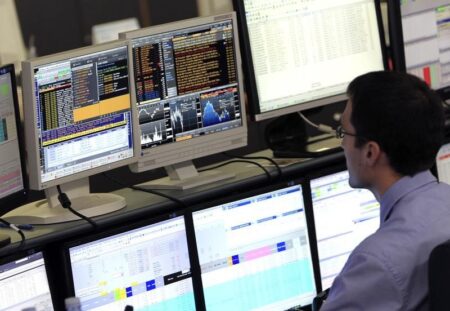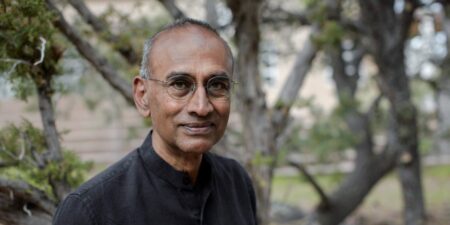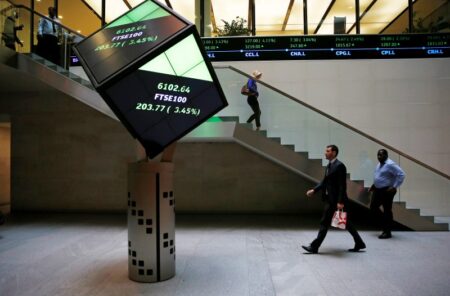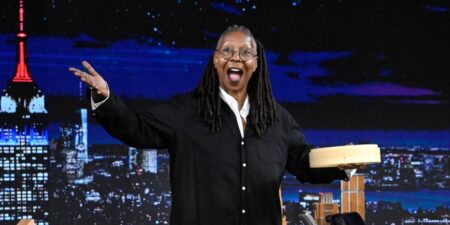This year at the Democratic National Convention, reporters aren’t the only ones carrying microphones around searching for people to talk to.
Creators are too — and they’re thriving.
Flying in from across the country, more than 200 influencers have descended on Chicago to capture and post content for their millions of followers online. In fact, their “reporter adjacent” job, as one influencer put it, is giving traditional media outlets a run for their money this year, highlighting the blurry role creators now play in media as both political surrogates and news sources for their followers.
Influencer and digital strategist Deja Foxx, a former Kamala Harris campaign staffer who posts reproductive rights content for her 140,000 TikTok followers, said creators are “uniquely positioned” to weigh in on this election. That’s because they’re able to tap into spaces that established media outlets might not be able to reach.
Influencers are increasingly taking on the responsibility of delivering news to young people, but they’re not the same as traditional press, despite being grouped alongside them, 24-year-old Foxx told Business Insider.
“Journalists are attached to organizations and have very particular values they have to follow,” she said. “Influencers often are a personal brand.”
For the first time ever, the DNC organized a dedicated section for influencers at Chicago’s United Center to watch the programming. Creators were even invited to a yacht party with campaign-themed cocktails, Wired reported. Two sources familiar with the Harris campaign’s strategy also confirmed that their team is helping to arrange interviews between influencers and Democratic politicians. For example, influencer Nadya Okamoto interviewed Michigan Governor Gretchen Whitmer for TikTok, while Vidya Gopalan spoke to Vice President Harris at the convention.
The DNC also added five influencers, including Foxx, as podium speakers on the main stage.
Carlos Eduardo Espina, an influencer who is set to speak on Wednesday, said most social-media personalities he knows at the convention are paying for their own travel, hotels, and miscellaneous expenses, though a few had their costs covered by outside groups like PACs. Espina’s content focuses on immigration rights, and almost all of his videos are in Spanish, which has grown his online audience to more than 10 million followers on TikTok.
“I don’t consider myself a journalist, but my audience definitely does,” the 25-year-old said. “I give information, but it’s always my own opinion, so it’s more like we’re political commentators.”
Social-media creators often don’t adhere to the same norms as traditional journalists. For instance, many attendees at the DNC are comfortable being openly partisan, an approach that would likely violate a mainstream media outlet’s policies.
“As creators, it’s an opportunity for advocacy and also for recognition,” Josh Helfgott, an LGBTQ+ advocate and creator with around 5.5 million TikTok followers who is attending the DNC, told BI.
But as creators have risen to center stage at this year’s convention, some traditional media reporters have felt sidelined.
Established media outlets aren’t too happy
Unlike their social-media counterparts, several members of the traditional news media have been frustrated at their treatment during this year’s convention. Some feel irked by long entrance lines, while others have complained of limited resources, such as not enough press stands. Meanwhile, one journalist told Reuters that many of them are restricted from going anywhere near the TV booths to interview people.
“We are concerned that the decision to reduce dedicated and accessible workspace by hundreds compared to prior conventions will hinder journalists’ ability to cover the historic nature of this convention,” a representative for the print news-media group the Standing Committee of Correspondents told BI.
The cost of attending has also caused some journalists without company sponsors to forgo their travel plans, one member of The National Association of Black Journalists, who spoke on the condition of anonymity for fear of professional repercussions, told BI. To obtain an assigned chair at a table with a working electrical outlet, newsrooms have to pay hundreds of dollars a head, which can stretch budgets for smaller outlets. When a publication isn’t willing to pay, bearing the cost themselves to travel to high-level events like the DNC is too much for a typical reporter’s salary, the NABJ member said.
The elevation of influencers at this year’s DNC and Republican National Convention, which invited a group of nearly 100 internet stars in July, is a sign of the times. Many young people now get their news from social platforms like TikTok and Instagram rather than traditional outlets like The New York Times or NBC News, especially because many view influencers as more relatable sources of information. The presidential campaigns have noticed this shift and expanded creator outreach this year as they push to get their messaging in front of young voters.
“It’s becoming increasingly important for influencers to gain similar access to that of traditional media so that they’re better equipped to educate these young people who are turning to them for education,” said Victoria Hammett, Deputy Executive Director of the nonprofit Gen Z for Change. “The word journalism holds a lot of weight, so most of them I think are more akin to commentators.”
The DNC did not immediately respond to a request for comment from BI.
Both campaigns are leaning more into influencer strategy compared to last election season
Outside of this week’s convention, the Harris-Walz campaign has vetted over 2,800 creators to serve as general social-media advocates for the campaign, according to a source familiar with the effort, who spoke on the condition of anonymity as they were not allowed to speak publicly about the work. The campaign tapped influencer-marketing agency Village Marketing, which worked with the Biden campaign in 2020, to help coordinate its influencer strategy.
Unlike the last presidential election, when Biden spoke with a smaller group of nationally known influencers as part of its social-media push, the Harris strategy is built around working with far more creators from across different niches, like beauty and fashion, to reach strategic media markets. It’s not just about connecting with influencers who advocate on a particular issue that’s related to this election, like climate change, immigration, or healthcare. That’s coming into focus at this year’s DNC where creators who don’t typically post political content are also showing up.
“The DNC inviting 200 creators is a huge step towards integrating this new part of media into a legacy part of media,” Helfgott said. “Us simply being there is such a ginormous step.”
Early on, the social team for Harris and Walz leaned into what had momentum, such as coconut memes and references to the Charli XCX album “Brat.” Its influencer team similarly taps into social trends, though the campaign also hosts regular informational briefings with creators and answers DMs via a dedicated Instagram account to make sure influencers are accurately capturing the campaign’s position on issues, the source familiar with its influencer strategy told BI.
“Our job as a campaign is to break through the noise and make sure we’re talking to voters wherever they are – TikTok is one of those landscapes, and we’re leaving no stone unturned,” Rob Flaherty, Deputy Campaign Manager for Harris, told BI in a statement.
Read the full article here


